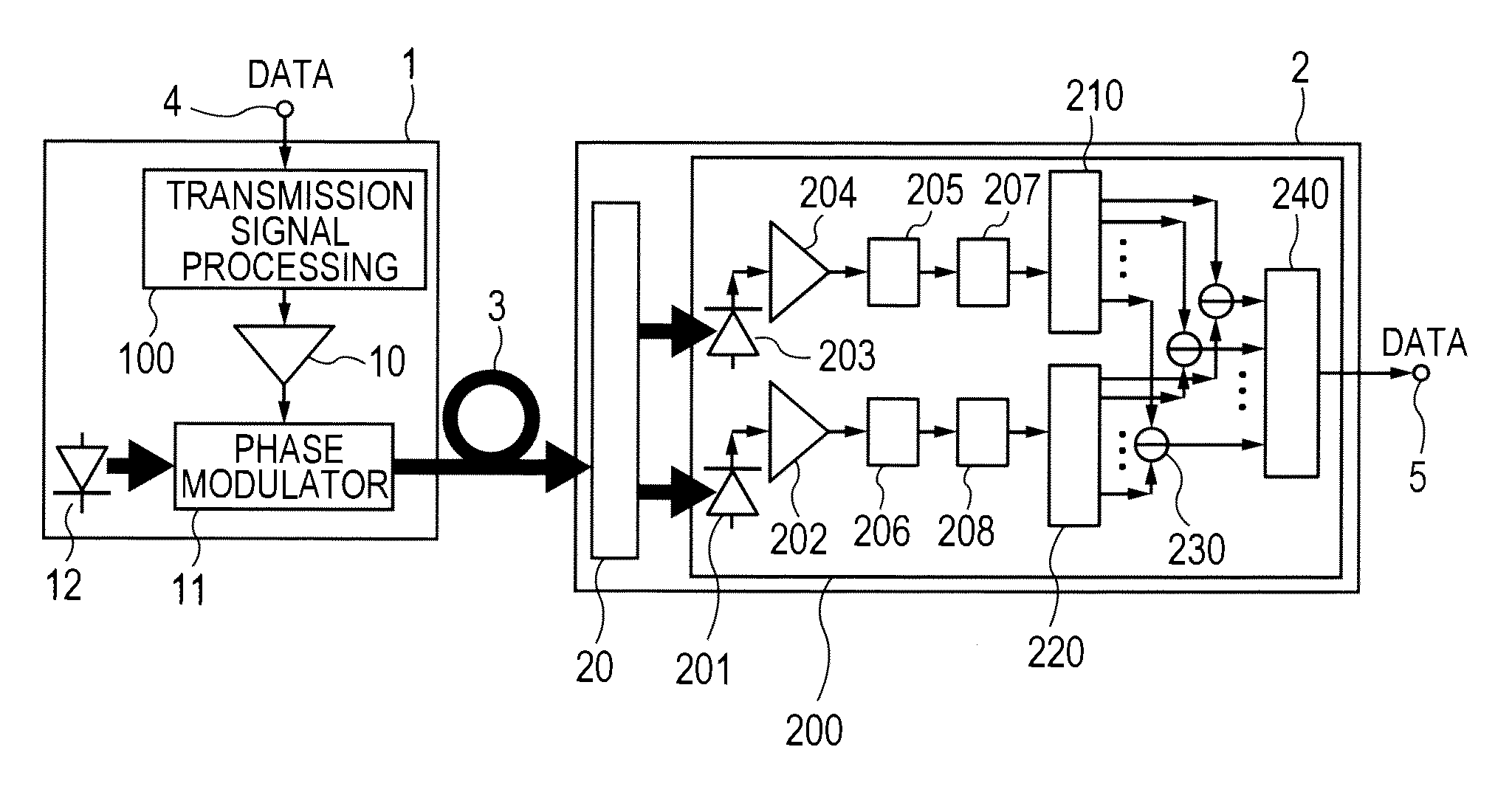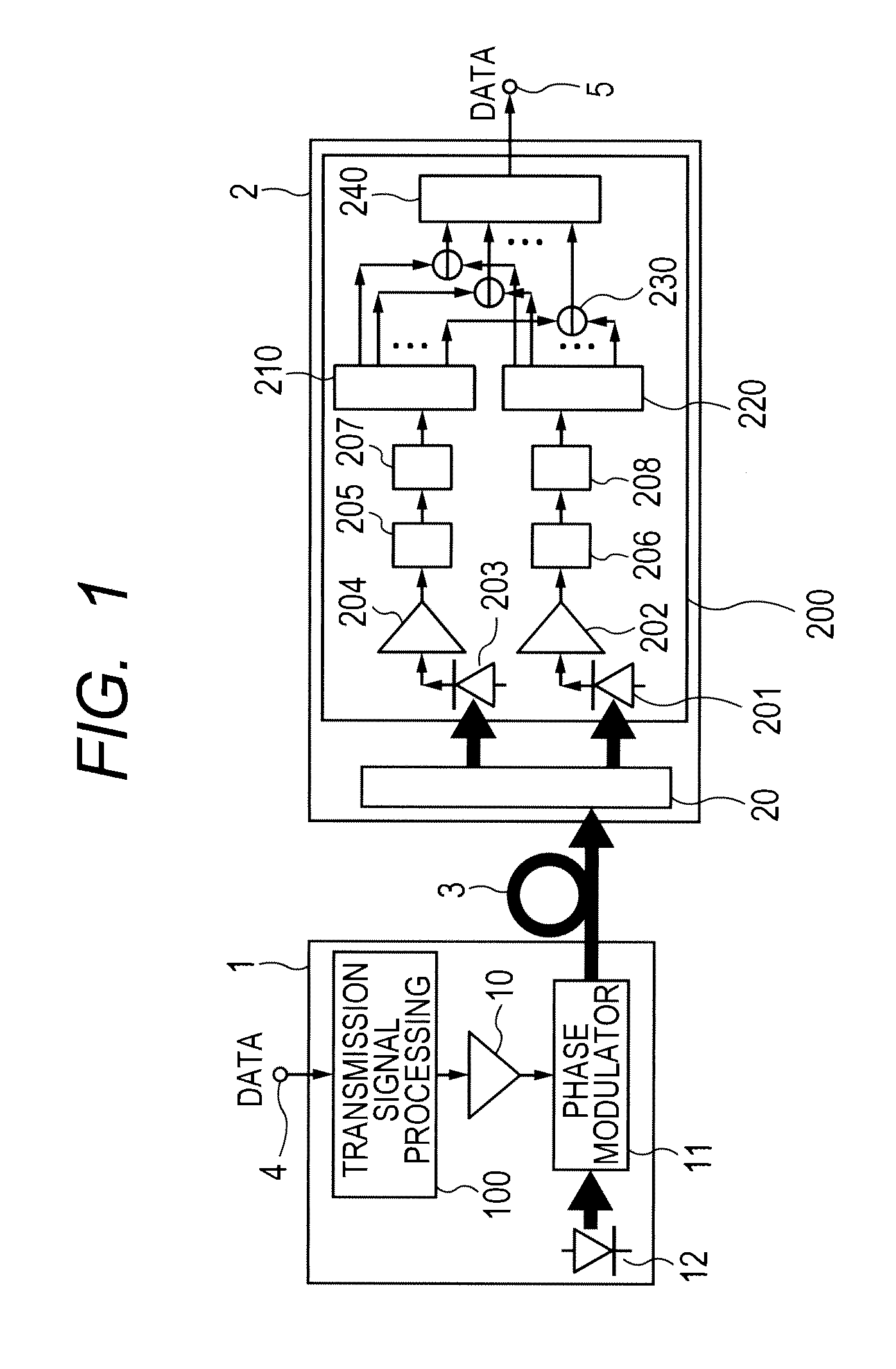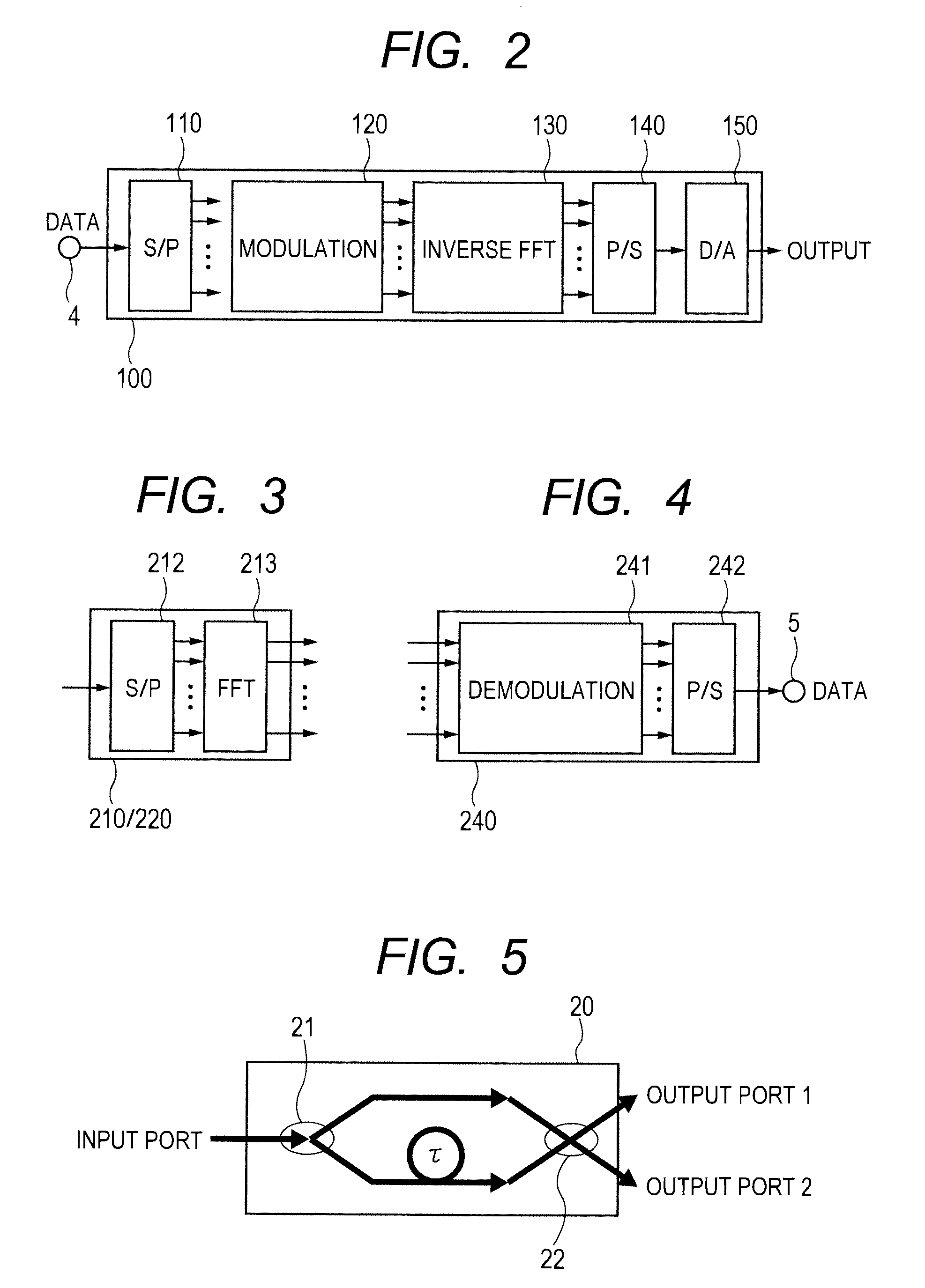Optical communication system, optical receiver, optical transponder, wavelength multiplexing optical communication system, wavelength multiplexing receiving device, and wavelength multiplexing optical transponder
a communication system and optical fiber technology, applied in the field of optical communication systems, can solve the problems of limited transmission distance, limited transmission distance, and inability to bring into reality the trunkline optical communication system having a transmission distance about 500 km, and achieve the effect of low cost, reduced optical fiber online, and simple configuration of the communication system according to the present invention
- Summary
- Abstract
- Description
- Claims
- Application Information
AI Technical Summary
Benefits of technology
Problems solved by technology
Method used
Image
Examples
first embodiment
1. First Embodiment
[0174]A first embodiment will be described with reference to FIG. 1 and the like. Although it will be assumed that a modulation format for subcarriers is 4-QAM for convenience of explanation hereinafter, a modulation format that can be used in the present invention is not limited to 4-QAM, and any subcarrier modulation format can be used. In addition the number of subcarriers is assumed to be N (N is 1 or a larger integer).
[0175]FIG. 1 shows a block diagram of an optical OFDM communication system.
[0176]The optical OFDM communication system includes, for example, an optical transmitter 1, an optical fiber 3, and an optical receiver 2. The optical transmitter 1 includes, for example, a transmission signal processing unit 100, a drive amplifier 10, an optical phase modulator 11, and a laser source 12. The optical transmitter 1 can includes an input terminal 4. The optical receiver 2 includes a delay interferometer 20, a balanced optical receiving unit 200. The optica...
second embodiment
2. Second Embodiment
[0208]An optical transponder according to a second embodiment will be described with reference to FIG. 15. This optical transponder is a device including an optical transmitter 1 and an optical receiver 2 mounted on a chassis or on a board. Therefore, the optical transponder includes two optical fibers 3-1 and 3-2. The optical fiber 3-1 is used for transmitting optical signals, and the optical fiber 3-2 is used for receiving optical signals. As the optical transmitter 1 and the optical receiver 2 of an optical transponder 700, those used in the above described embodiments can be used accordingly. To put it concretely, although the optical transmitter and the optical receiver shown in FIG. 1 are used in FIG. 15, any one of the optical receivers 2 shown in FIGS. 6, 7, 8 and 10 can be used as the optical receiver.
third embodiment
3. Third Embodiment
[0209]A third embodiment will be described with reference to FIG. 16. FIG. 16 is a block diagram of the entirety of a wavelength multiplexing communication system according to a third embodiment. This system is an optical communication system in which plural digital information signals are converted to wavelength multiplexing signals by a wavelength multiplexing transmitting device 800; these wavelength multiplexing signals are transmitted to a wavelength multiplexing receiving device 900 via an optical fiber 3 which is a transmission path; and the plural original digital signals are restored. The wavelength multiplexing transmitting device receives the plural digital information signals from input terminals 4-i (i=1, 2, . . . , n). The received digital signals are respectively converted to optical signals phase-modulated by optical transmitters 1-i (i=1, 2, . . . , n). The wavelengths of the optical signals output from the optical transmitters 1-i (i=1, 2, . . . ...
PUM
 Login to View More
Login to View More Abstract
Description
Claims
Application Information
 Login to View More
Login to View More - R&D
- Intellectual Property
- Life Sciences
- Materials
- Tech Scout
- Unparalleled Data Quality
- Higher Quality Content
- 60% Fewer Hallucinations
Browse by: Latest US Patents, China's latest patents, Technical Efficacy Thesaurus, Application Domain, Technology Topic, Popular Technical Reports.
© 2025 PatSnap. All rights reserved.Legal|Privacy policy|Modern Slavery Act Transparency Statement|Sitemap|About US| Contact US: help@patsnap.com



